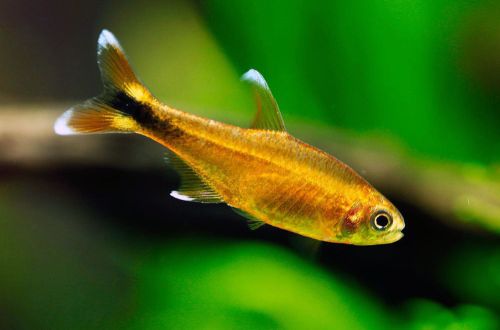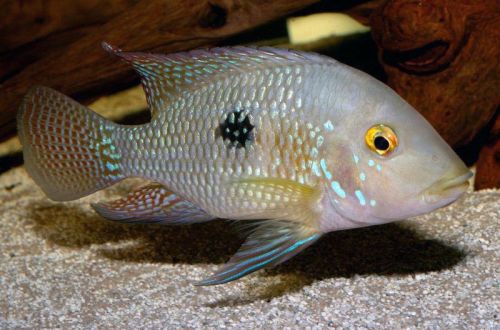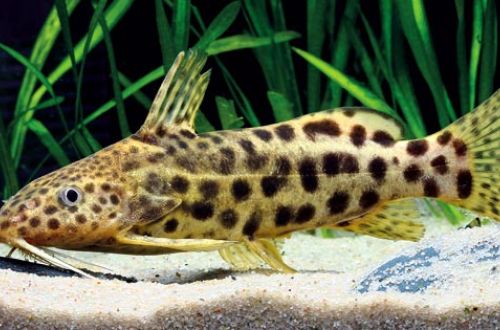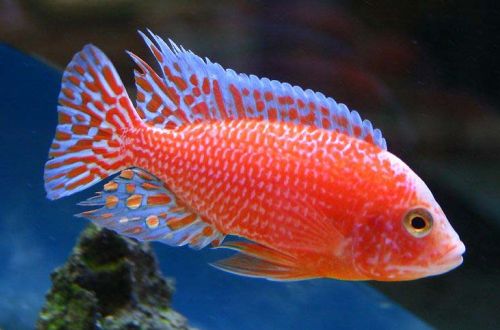
Hasemania
The copper tetra or Hasemania, scientific name Hasemania nana, belongs to the Characidae family. It is considered one of the best Tetras for the general aquarium due to its bright coloration, excellent compatibility with other popular fish, hardiness and unpretentiousness.

tirotiro
Habitat
It comes from the San Francisco River basin (port. Rio São Francisco) from the territory of Brazil. It occurs in small streams, rivers and channels of the main channel. The habitat experiences seasonal fluctuations in water levels, and the river itself flows through hilly, in places mountainous terrain.
Nga korero poto:
- Te rahi o te aquarium – mai i te 70 rita.
- Te pāmahana – 23-28°C
- Uara pH - 6.0-8.0
- Te pakeke o te wai – ngohe ki te pakeke (5-20 dGH)
- Momo papanga – ahakoa
- Te rama – kua whakaahuru
- Te wai paratai - kao
- Te nekehanga o te wai – te ahua
- Ko te rahi o te ika ka eke ki te 5 cm.
- Kai – ahakoa kai
- Te huru – marino
- Te pupuri i roto i te kahui o te iti rawa 8-10 takitahi
Whakaahuatanga
Adults reach a length of about 5 cm. The color is silvery with a rich copper tint. Most of the caudal peduncle is dark, the tips of the tail and fins are white. Females are more modestly colored, the colors are not so saturated.
kai
Absolutely not pretentious appearance, the walls accept all types of popular food (dry, frozen, live). Their quality and composition largely affect the color of the fish, so strive to purchase food only from well-known and reputable manufacturers.
Te tiaki me te tiaki, te whakaritenga o te aquarium
For a group of fish of 8-10 individuals, a tank of 70 liters or more will be required. Hasemania is not demanding in the design of the aquarium and adapts perfectly to various water conditions. The only recommendation is the presence of subdued lighting, because in bright light the color of the fish noticeably fades, becomes nondescript.
Whanonga me te Hototahi
A peaceful schooling fish, kept in a group of at least 8–10 individuals, with a smaller number become somewhat aggressive, although with their size it is unlikely that they will be able to cause problems to their neighbors. Compatible with many well-known aquarium species, including viviparous, zebrafish, rasboras, corydoras catfish, some gourami, South American cichlids and others.
Whakawhanaunga / whakatipu
Ko te ahua o te parai ka taea ahakoa i roto i te aquarium noa, engari he iti noa to raatau nama ka heke i nga ra katoa mena kaore e whakatokia ki roto i te tank motuhake i te waa. Ko te he katoa o nga ika pakeke, na te parai he taapiri pai ki te kai.
In order to increase the chances of survival and somehow systematize the breeding process (spawning was not spontaneous), it is recommended to use a spawning aquarium, where sexually mature fish are placed during the mating season. Usually this is a small container with a volume of about 20 liters. The design is arbitrary, the main emphasis is on the substrate. In order to protect the eggs from being eaten (Tetra copper eats its own offspring), the bottom is covered with a fine-mesh net, or small-leaved plants or mosses (for example, Java moss). An alternative way is to place a layer of glass beads with a diameter of at least 1 cm. The lighting is subdued, a heater and a simple airlift filter are sufficient from the equipment.
Ko te whakaohooho mo te timatanga o te wa kahui ko te whakarereke haere i nga tawhā wai i roto i te aquarium noa ki nga uara e whai ake nei: pH 6.0–6.5, dH 5–10 i te pāmahana tata ki te 28-30°C. Ko te kaupapa o te kai me tio, he kai ora ranei.
Me ata titiro ki te ika, kare e roa ka koowhio ake etahi o aua ika - he uha enei kua pupuhi mai i te caviar. Ka timata te tangi o te tane ki te tangi - he ahua tenei o tenei momo, ka whakaatu i nga tohu o te aro ki a ratou i whiriwhiri ai. Whakapaia ka whakakiia te taika whakatipu ki te wai mai i te taika hapori. Whakanohoia nga uwha ki reira, hei te ra i muri mai he tokorua nga tane nunui e tino miharo ana te ahua.
It remains to wait until spawning occurs, its end can be determined by females, they will “lose weight” greatly, and eggs will be noticeable among the vegetation (under a fine mesh). The fish are returned. The fry will appear within 24-36 hours, after another couple of days they will begin to swim freely in search of food. Feed with specialized microfeed.
Nga mate ika
Ko te punaha koiora o te aquarium taurite me nga tikanga e tika ana ko te taurangi pai rawa atu mo te puta mai o nga mate, na, mena kua rereke te whanonga o te ika, te tae, nga waahi rereke me etahi atu tohu ka puta, tuatahi tirohia nga tohu wai, katahi ka haere ki te maimoatanga.





